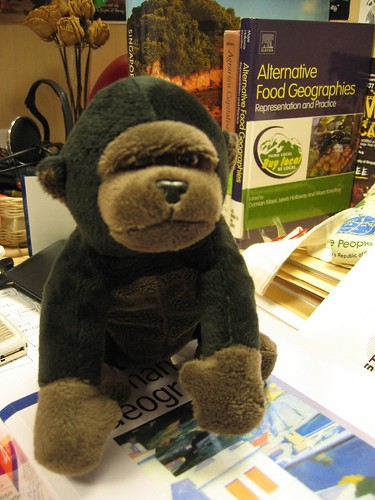Pride and protest in Malaysia: Foreign governments and conservation groups are quick to condemn countries that cut down their rainforests. But attitudes must change on both sides if the forests are to survive
21 October 1989
From New Scientist Print Edition
IN THE SOUTHERN part of the Malay Peninsula, among mountains close to 1000 metres high, two wild rivers have their source. Forest covers the whole region and despite decades of logging in the area, the upper catchments of these two rivers remain virgin territory.
The rivers are Sungai Rompin, with its catchment mostly in the Malaysian state of Pahang, and Sungai Endau in the neighbouring state of Johore. For more than a year, these two states have been deliberating whether to create adjoining state parks with a combined area of 920 square kilometres. The states are keeping their options open. They have designated a core area of 200 square kilometres for the park, allowing for the possibility of future logging in the remaining area.
Conservationists in Peninsular Malaysia have been fighting to protect the Endau-Rompin forests for more than a decade. Although forest covers more than 40 per cent of the peninsula, most of the lowland tropical rainforests have been logged. Loggers are now moving into the mountains at altitudes of 800 metres and higher. True montane forests, stunted, moss-festooned tangles of slender trees and climbers, are confined to ridgetops above 1500 metres, and so remain more or less undisturbed. But in many places, the gentle slopes of the adjacent forest are good for agriculture. In the Cameron Highlands, tea planters and vegetable farmers are steadily clearing the forest. Outside Endau-Rompin there are only two other extensive areas of virgin rainforest in the lowlands of Peninsular Malaysia. One is in Krau Wildlife Reserve, an area of 537 square kilometres. Only scientists are allowed into the reserve. The other area is in Taman Negara, unquestionably one of the world's great national parks, covering 4300 square kilometres of lowlands, hill forest and mountains in the central part of the peninsula. Here the rainforest attracts some 10 000 visitors a year. Despite threats from loggers, hydroelectric dams and road construction, Taman Negara has survived with its boundaries almost wholly intact for half a century.
With such a large tract of forest still intact, why are conservationists so determined to protect Endau-Rompin? The simple answer is that this forest is different: the species that grow and live in it are not the same as those in Taman Negara, 300 kilometres to the north. Endau-Rompin is home to a dozen Sumatran rhinoceroses, the largest known population in the peninsula. Only a few hours' drive from the cities of Johore Bharu and Singapore, the forest, and its rivers and wildlife, offer great promise for tourism and education about the environment. Perhaps more important, the creation of the park will be a landmark for conservation in Southeast Asia. It will show that Malaysia's state governments at last accept responsibility for protecting the environment.
Malaysia is a federation of states. The states, rather than the federal government, have total control over the land and how it is used. In the past, Malaysia's state governments showed little regard for conservation of either nature or their natural resources. In the late 1970s, the federal government admitted that less than 10 per cent of logged areas received any follow-up treatment to encourage the regeneration of timber trees.
In 1978, the government drew up a National Forestry Policy and by 1986 all states in Peninsular Malaysia had passed laws to implement the policy. In consultation with the states, foresters working for the federal government developed what they claim is a sustainable system of forestry. This is now being applied on a small but growing scale by some states. Nevertheless, in many places, loggers working under licence are responsible for rehabilitation of the area they have logged.
Many companies pay little more than lip service to rehabilitation. A recent court case in Pahang state revealed that a sawmilling company that had selectively logged more than 6000 hectares of forest had replanted only four hectares. The forestry officials were so lax that they had allowed the company to move on to new cutting areas.
The government argues that such floutings of licence conditions are isolated cases. But for all the wise prescriptions for management passed down from above, there is below a powerful momentum of exploitation and corruption. Policing the system is extremely difficult.
Consider a typical area of virgin lowland rainforest in Peninsular Malaysia or Borneo. The tallest trees are between 50 and 60 metres tall. On good sites there might be 30 such trees per hectare, with dozens of smaller ones in the spaces between, and an understorey rich in palms. On the ground grow few herbs, but on any one hectare there may be seedlings representing more than 100 species.
A logging operation is highly selective. Of some 700 species of trees that reach a merchantable size, only about 30 are exported in substantial quantities. Local markets make use of a wider range of species, but loggers often fell fewer than 20 trees per hectare. The number of trees harvested may be small but the damage to the rest of the forest is extensive. Felled trees tear down climbers that link them to their neighbours. Logging roads and tracks where loggers drag out trees damage a disproportionate amount of forest and expose the soil to erosion. Surviving seedlings prosper as light floods through the broken canopy, but most must compete with a tangle of pioneer plants that quickly colonise open ground.
A forest manager faces a difficult task. According to the prescriptions of Malaysia's Selective Management System, the forester must make an inventory of the seedlings that are present after logging. If natural regeneration is not enough to replace the logged trees, then the foresters must supplement the young trees with seedlings raised in nurseries.
An individual or an organisation expressing concern for the conservation of rainforests the world over cannot prove that a country such as Malaysia is mismanaging its forests as long as the government insists it is managing them well. The Malaysian government claims, for example, that of 364 000 hectares logged between 1981 and 1985, 96.9 per cent were 'rehabilitated'. To check on the extent of rehabilitation means carrying out the same sort of detailed survey that foresters are now required to do, and to differentiate among the mind-boggling assortment of seedlings and saplings, deciding whether enough of them belong to the desirable timber species to ensure a good crop in the future.
Selective logging and replanting will ensure that the land is covered by rainforest, but its structure is different from that of virgin rainforest. The problem is how to preserve the stature and diversity of the virgin forest that remains. In Australia, conservationists are demanding a moratorium on logging in the virgin rainforests of Queensland and might well achieve one. A moratorium could be the best way to conserve virgin forests in Malaysia and Indonesia, but would probably take many years to achieve. As yet, there have been no strong moves in this direction, although the Sahabat Alam Malaysia (Friends of the Earth Malaysia) is beginning to promote the idea. In the meantime, there is an urgent need to identify the areas that are most in need of protection, and encourage governments to make them national parks, state parks, catchment forests, tribal reserves, wildlife reserves, no-logging zones, no-logging-in-the-next-ten-years zones - or whatever status will afford them some protection in the short term at least.
Conservation is making some progress in Malaysia. In a scheme initiated by the International Union for Conservation of Nature and Natural Resources (IUCN), the World Wide Fund for Nature, Malaysia is drawing up, with the active support of the states concerned, a series of strategies for conserving natural resources. The WWF Malaysia has completed its strategies for five of the 11 states in Peninsular Malaysia, and for Sarawak in East Malaysia.
The WWF Malaysia aims to make conservation more holistic, so that rather than being the responsibility of a single government department, conservation pervades all planning and operations in all departments and in the private sector. While this may seem idealistic, the approach has gained some support from the federal government, which sponsors seminars for state administrators. There have already been instances where states have changed direction on plans for development in line with the conservation strategy. Selangor, for example, has shelved a scheme to clear part of a mangrove-forested island to make way for an aquaculture project.
The Malayan Nature Society is also gaining respect among decision makers for its methodical and scientific approach to conservation. In 1987 the Selangor state government provided the society with funds to set up a small wildlife sanctuary and bird observatory in a threatened area of mangroves. The society has also been involved in drawing up plans for the development of facilities for visitors to Taman Negara. A group of advisors from the society has helped the Sarawak National Parks and Wildlife Office to plan facilities for visitors to the proposed Matang National Park near Kuching.
Malaysia's federal government was involved in the formulation of the UN Food and Agriculture Organisation's Tropical Forestry Action Plan (see 'The tropical chainsaw massacre', New Scientist, 23 September). An action plan for Malaysia is in preparation. There is growing awareness in Malaysia, both among the public and in government, that conservation is an inherent part of successful development. Unfortunately, this awareness is so far evident mostly on paper rather than in practice.
Translating words into action will be a slow process, needing patience, diplomacy and education. Malaysia is aware of its colonial past and proud of its independence. The authorities do not want to be told what is good for them. But if the message is polite and deferential, from within the country, with sound arguments and the outline of alternative strategies, then there is a good chance that in time it will get through and practices will change. Yet there are limits to this approach.
In 1985, Gurmit Singh, president of the small but influential Environmental Protection Society, said: 'Concerned foreigners can get their concerns about Malaysian issues resolved by letting Malaysian groups handle the issues on their own, while providing moral support.' Since then the government has cracked down on editorial freedom and Singh has had to modify his view: 'When the suppression of the media becomes acute within Malaysia, then direct action by foreigners is our only hope,' he says.
Well-informed comment from outside the country almost certainly has some impact. An international outcry over the importance of conserving rainforests stirred the Malaysian government to announce its commitment to responsible management of its forests. But conservationists must strike a balance between condemnation and diplomacy.
Time then becomes the enemy: how much time can the rainforest afford to lose? This is where economic arguments are of most value, and where national parks come into their own. Even the wealthier countries of the developing world, such as Malaysia, are burdened with international debt. 'Debt for nature' swaps have been negotiated in Costa Rica and Bolivia, whereby Western banks have written off debts in exchange for the setting aside of an area of rainforest.
Diplomacy wins support for the forest
There are good reasons for making Endau-Rompin a park, and not all are to do with conservation. Parks can bring in much needed foreign currency from tourists; they are beginning to attract local interest for their potential in education. And, a factor seldom considered in the West, international recognition of Malaysia's part in preserving rainforests - internationally important in conservation terms - contributes to national pride.
Recognition is one thing; interference another. Criticism from other nations can damage or destroy the work of local conservation groups. In 1986, the international condemnation of logging in the Baram and Limbang regions of Sarawak, which disrupted the lives of many long-house communities and the Penan hunter-gatherers, produced a knee-jerk reaction from the authorities.
Conservation groups such as the Malayan Nature Society have an unwritten rule that says environmental issues should be fought first at the local level; then nationally; and internationally only as a last resort. International intervention should be confidential: as a first step, leading international conservationists with personal experience in Malaysia should write to key political figures, for example. Finally, in desperation, international exposure might have some effect.
The Penan issue in Sarawak in which local tribespeople are fighting against the disruption of their lives by outside exploitation of their forest, quickly boiled over. It soon escalated from local disputes between native people and unyielding government officials, to feature articles in international magazines and newspapers. The Sarawak government felt ridiculed, and both state and federal governments were seriously embarrassed. With such a loss of face, the government's reaction was to salvage pride through defiance. With news stories already in the overseas press, Sahabat Alam Malaysia mounted a brave and vigorous campaign in support of the Penan people. Protesters were arrested and interned without trial. The logging would continue. The logging, the blockades and the arrests still continue.
Other approaches in Sarawak have been more successful. The World Wide Fund for Nature in Malaysia has built up a good working relationship with the Sarawak government. It drew up its conservation strategy for the state in collaboration with the State Planning Unit. With support from the WWF, the Sarawak government has set up four new national parks and two wildlife sanctuaries in the past eight years.
The other East Malaysian state, Sabah, has also established national parks and reserves, again with some unobtrusive help from WWF Malaysia. The best known is Kinabalu Park, covering some 700 square kilometres around Mount Kinabalu. Kinabalu Park is a mainstay of the state's tourist trade, attracting more than 100 000 visitors a year.
Neither Sabah nor Sarawak has a strong local conservation movement; comment on matters of environmental concern must come from individuals with influence in the government, or from environmental groups in Peninsular Malaysia or overseas.
But if international outcry leads to the sort of reaction Sarawak shows in the Penan case, how can other nations express their concern? Positive reinforcement might be the most fruitful approach. There is no shortage, in Peninsular Malaysia at least, of well-trained foresters who appreciate the need for sustainable management of forests. Some praise for their efforts in establishing a policy for protection of their forest resources is warranted.
The international banking community has an obvious part to play. The world's large banks should support not only new projects based on sound ecology but should also support efforts to reduce the impact of existing activities in the forests. Each year for the past decade, Peninsular Malaysia has cleared around 50 000 hectares of forest to provide 'land for the landless', in the form of plantations of oil palm, rubber and cocoa. The motives are good but the results damaging. The way around this problem is to encourage a use of the land that is geared to local markets rather than cash crops for export. Malaysia no longer receives large handouts in international aid, nor is it looking for them. But other countries can help by offering the expertise of people experienced in rehabilitation of mined land, or in techniques for extracting logs without damaging the remaining forest, or in helping to design and build facilities for visitors to national parks.
The wealthier countries of the world can participate in conservation directly. In Southeast Asia people have little choice but to use timber from the local rainforests until their plantations provide an alternative. But in Europe, North America and Australia, plantations already provide ample timber.
Individuals and organisations can offer support in the way of financial help to the environmental groups working diligently for the conservation cause in Malaysia. Individuals can also help by sending letters of appreciation for the positive things that are happening in countries such as Malaysia. Support for the national park system, and expansion of it, would be well received. Better still, but rather more expensive, is a visit to the country to sample the delights of Taman Negara or Kinabalu, followed up with a letter to express feelings in support of the rainforest. Protests and placards have their place. The challenge is to find slogans that convey to the government concerned an appreciation that there are no simple solutions, and that a change of attitude is needed just as urgently in the developed as in the less developed world.
Should all these approaches fail, only environmental catastrophe will persuade people that ruthless exploitation of forests must stop. In November 1988, Thailand suffered its worst natural disasters in decades when flooding and landslides killed more than 450 people. Recognising that deforestation was the main cause, the Prime Minister, Chatichai Choonhaven, persuaded his cabinet to agree to terminate all existing logging concessions in the country.
Perhaps, in a year or two, Malaysia's Endau-Rompin forest will earn a place on the international tourist map. A steady stream of foreign visitors will encourage local businesses and add to the state coffers. But most important, Malaysians will also be drawn to the area and realise just what benefits a rainforest can bring, from clean streams and reliable rainfall to a boost to national pride and an uplifting of the individual spirit.
Ken Rubeli is the manager of Wangat Lodge, a centre for environmental education in New South Wales, Australia. He trained as a forester and worked for 12 years in Malaysia.
From issue 1687 of New Scientist magazine, 21 October 1989




